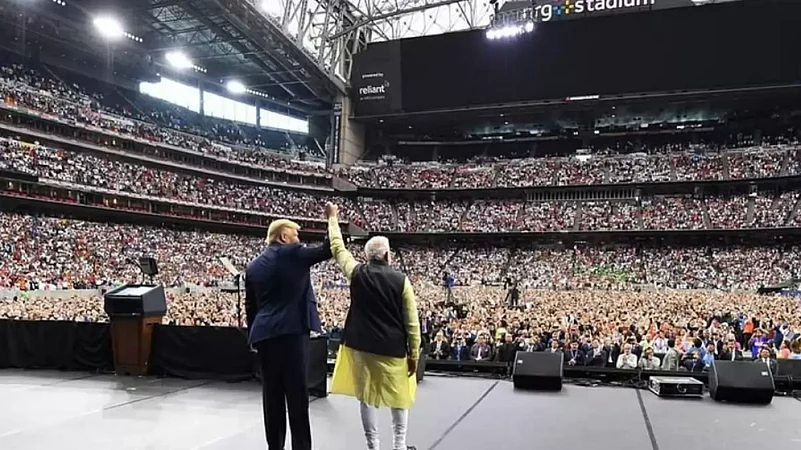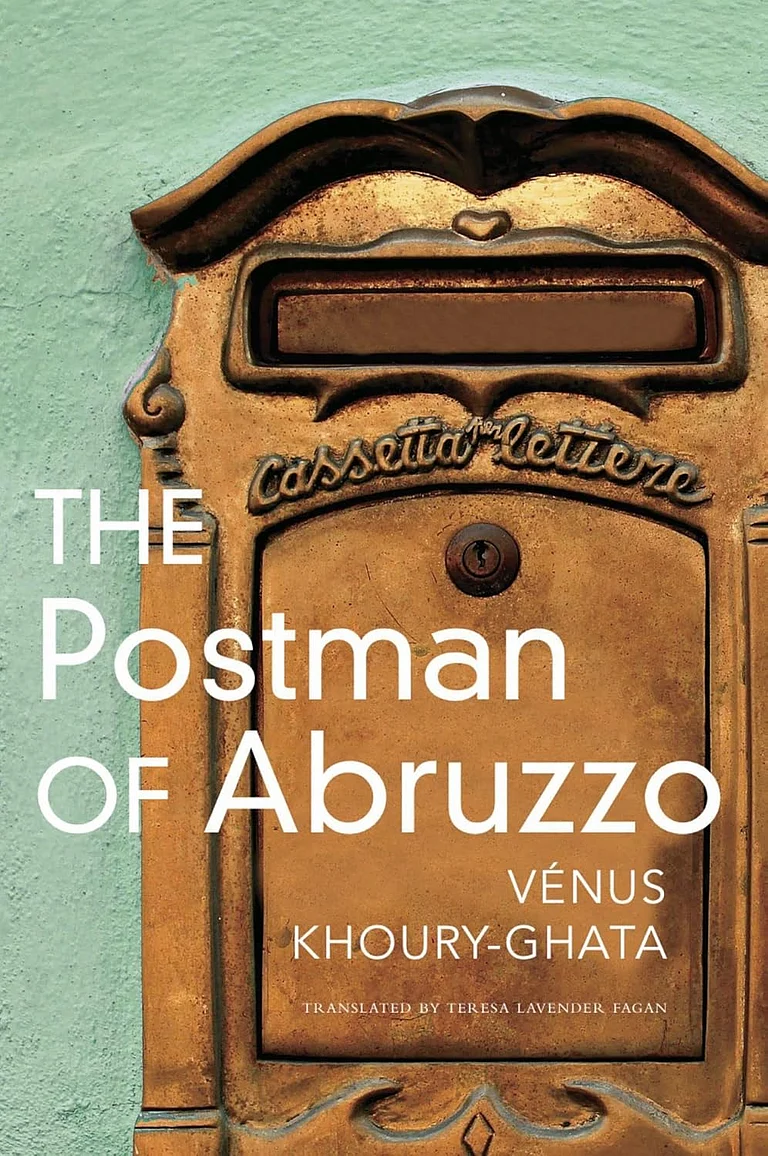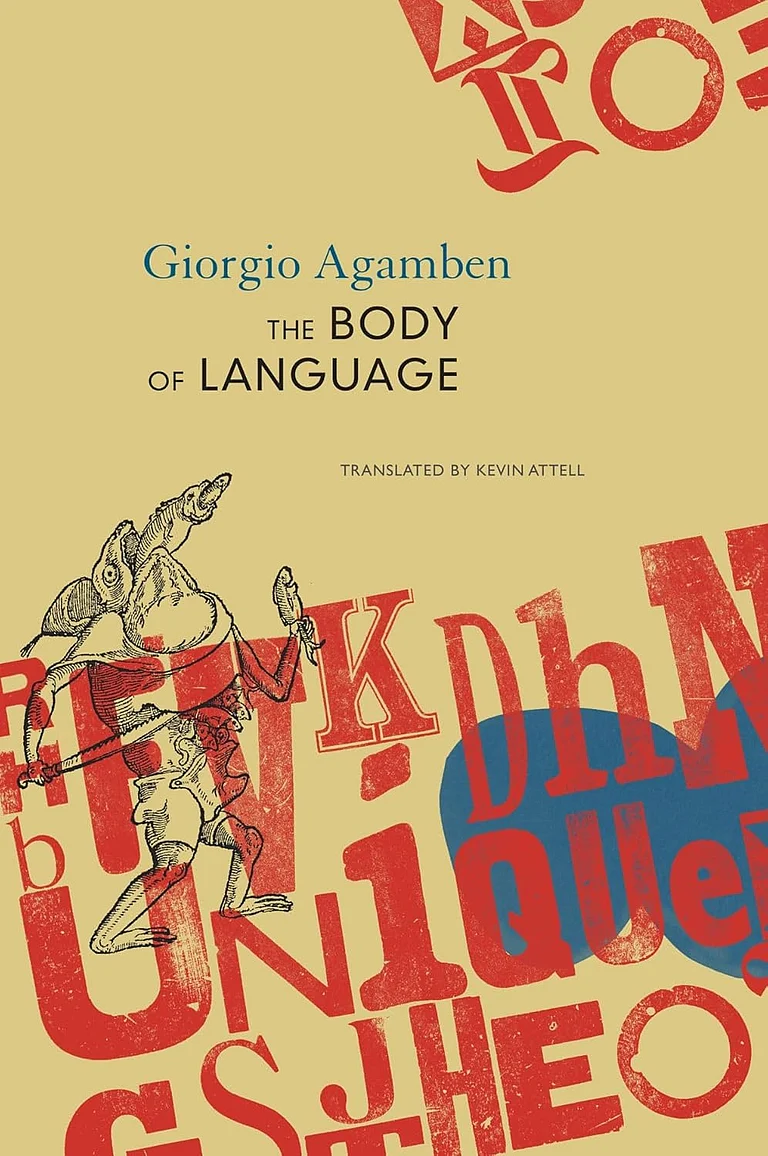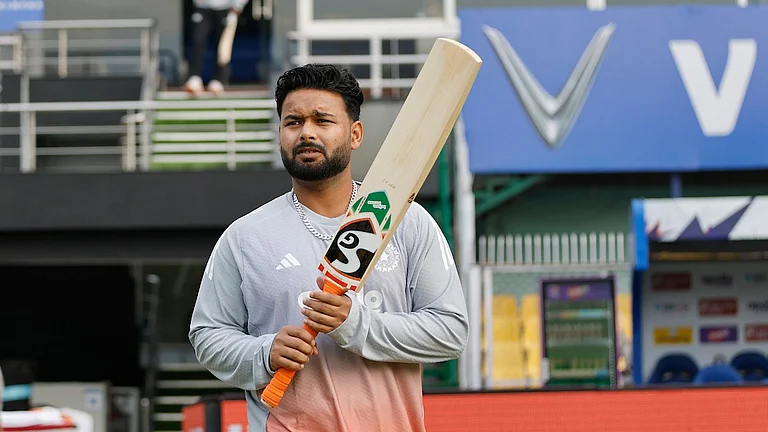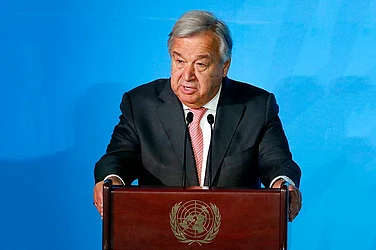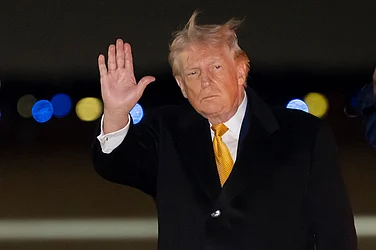When Joe Biden chose Kamala Harris to be his vice president of the United States, Indians across the globe were over the moon. Today, on the first official state visit of Prime Minister Narendra Modi on the invite of President Joe Biden, a similar fervour was witnessed at the John F Kennedy Airport in New York where hundreds of Indian-Americans waited with garlands to give a grand welcome to the Indian prime minister. Slogans of “Modi Modi” and India-US friendship were everywhere.
Ever since Prime Minister Narendra Modi came to power in 2014, he has perfected the art of filling up huge stadiums and auditoriums abroad with patriotic jingles. He does not shy away from the camera, in fact, he invites it. And that has worked to build his unique strategy for popularity among large sections of the Indian diaspora in countries like the US and the UK. He always makes it a point to connect to the diaspora when he travels abroad. This time, too, the prime minister will address an invitation-only gathering of diaspora leaders in Washington on Friday.
Although this is his first official invite, PM Modi has visited the US several times in the past during his tenure, at least thrice during Obama’s presidency and at least twice during Trump’s presidency. During all of his previous visits, PM Modi has received huge cheers from Indians in the Americas.
Rise Of Indian Diaspora
At 18 million, India is the largest country of origin for diaspora globally, according to the United Nations’ World Migration Report. Of this, more than 4 million reside in the US. In the past two decades, this India-US relationship, which enjoys rare bipartisan support in a bitterly divided political spectrum, has consistently grown.
Besides Kamala Harris, many Indian-origin faces abroad have reached new heights, from politicians like António Costa (Portugal) to Suella Braverman and Priti Patel (Britain), from Anita Anand (Canada) to Priyanka Radhakrishnan (New Zealand), and CEOs like Sundar Pichai (Google), Laxman Narasimhan (Starbucks), Satya Nadella (Microsoft) to Leena Nair (Chanel) and others.
Certainly, India’s vibrant community helps build the nation’s visibility at global fora, boosts economic prosperity in the homeland through remittance earnings, and upscales foreign investments. But the ordinary Indian abroad characterised by his or her ethnic identity often has to negotiate the problem by engaging in active economic and cultural competition. In such a situation, the voice of a leader proudly representing his country in far-off lands speaks volumes.
Additionally, the Indian diaspora community, despite residing in a distant land has often been tied to Indian politics, often functioning as offshore pressure groups and vote banks for political parties in India. This even led to the Election Commission of India proposing e-postal ballots for NRI voters.
What Stands Out In Modi’s Popularity Among Diaspora Abroad?
During his first trip to the US in 2014, about 20,000 NRIs (non-resident Indians) gathered at New York’s Madison Square Garden. At the time, it was believed that Modi’s popularity there was largely due to the huge Gujarati diaspora in the US. But it soon became clear that he brought his audience to whichever country he went to, not restricted to the Gujarati community. In London, in 2015, he addressed a roaring crowd of 60,000 at Wembley Stadium.
However, it was the 2019 "Howdy, Modi!" event in Texas that became the prime example of this popularity. The landmark event was a community summit hosted by the Texas India Forum (TIF) for Prime Minister Narendra Modi and then US President Donald Trump on September 22 at the NRG Stadium in Houston. The tickets sold out quickly and over 50,000 people attended the event, making it the largest gathering for an invited foreign leader visiting the United States other than the Pope. During that visit, Modi and former US President Barack Obama also struck up a great bonhomie.
Modi’s charisma and the boost of self-esteem in his speeches resonate with his audience. As a result, a new madness was born in the West and "Modi mania" was reflected through this dramatic patriotism of the Indian diaspora.
There is no doubt that Modi has taken India to new heights, giving it a recognition that was often lost in previous governments, but at what cost? In stirring up conversations about India and Indians, a new patriotism was born, filled with fuzzy information and hidden realities. A romantic notion was created that is increasingly at odds with the ground reality. How the diaspora chooses to channel and exert its growing sphere of influence remains to be seen.
New Dawn, New Challenger
With the growing popularity of Prime Minister Narendra Modi, not just in the US but across many countries in the world, opposition leaders in India have realised the urgency to change the narrative before the Indian polity gets blanketed under Modi's influence.
Former Congress president Rahul Gandhi has already made two crucial trips to foreign countries to gain back the diaspora support it ceded to the BJP. Gandhi’s engagement with the Indian diaspora in New York came just three weeks before Modi’s state visit to the US. While the Congress party has an older, longer history of mobilising Indians overseas, lately it has been struggling to mobilise its voters even in the country.
As we approach the 2024 general elections, it will be interesting to see if Modi’s popularity continues to loom large over the diaspora or whether the non-saffron forces who hope to lay out an alternative vision for India, manage to break the spell.






